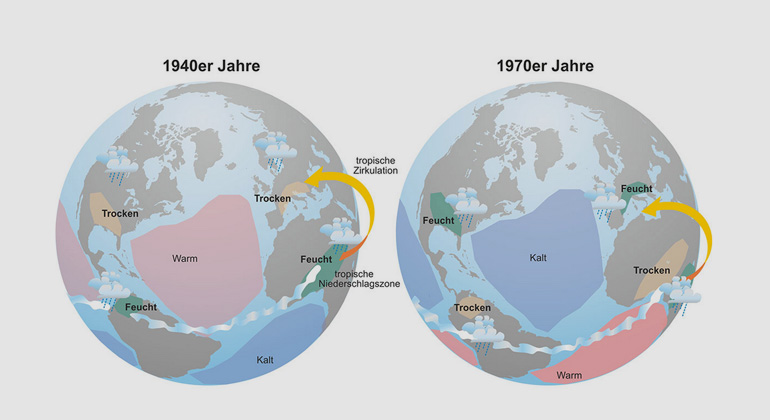Droughts and shifts in tropical circulation
A number of dry summers in central and southern Europe between 1945 and 1954 led to poor harvests. About 30 years later, the Sahel region suffered from deadly drought.
Both events were related to a shift of the tropical belt. This is shown in the latest paper of the Oeschger Centre’s climatology group published in Nature Geoscience. The team of researchers around climatologist Stefan Brönnimann of the Oeschger Centre created new data sets on atmospheric circulation covering this period. These data reveal that the northern tropical belt moved southward from the 1940s to the 1970s.
Atmospheric circulation in the tropical belt consists of ascending air in the tropical convergence zone, associated with intense precipitation, poleward flow at high altitudes and descent in the subtropics. The latter region hosts many of the world’s arid zones. During the dry summers around 1950, central and southern Europe were strongly influenced by the poleward extended subtropical high, while the innertropical wet zone reached the Sahel and brought abundant rainfall. The retraction of the tropical belt until the 1970s brought wetter summers in Europe, while climatic conditions in the Sahel region returned to arid.
The shift in the tropical belt was caused by the warming of the southern hemisphere relative to the northern hemisphere over this time period. The entire tropical belt is drawn towards the faster warming hemisphere. This could be shown by a set of climate model simulations. Both cooling aerosols in the Northern Hemisphere or internal processes in the oceans could have caused this asymmetric temperature trend. Since the 1970s the trend has changed again. The tropical belt expands and the arid zones migrate poleward. With ongoing climate change, a further widening of the tropical belt is expected, and with this a further poleward movement of the dry zones. The study points to the importance of shifts in the tropical belt for droughts around the globe.
Source
University of Bern | Oeschger Centre for Climate Change Research 2015








